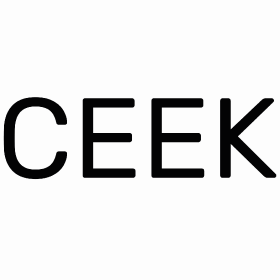We connect you with the best and most reliable agency partners for your projects. All DAN members are thoroughly vetted and ready to deliver exceptional results.

Featured Agencies
Prominent FMCG Marketing Agencies of UK
Select a region, city and industry type to discover the best digital marketing agencies!
DAN Member Agencies
Providing FMCG Marketing Services in UK
All fmcg marketing agencies in the UK have been vetted and verified against the following criteria:
- Portfolio Quality
- Reliable Services
- Sectoral Expertise
- Team Transparency
If you have any feedback regarding the agencies, please contact us.
-
Found.
HQ: LondonStandard MemberWe're Found, the Everysearch™ agency. A master of search performance across all digital marketing platforms.Services- Content Marketing
- Digital PR
- Digital Strategy
- Online Advertising
- PPC
- SEO
51-2005 Awards -
UX Connections
HQ: London+2 cities- USA
- New York
- Australia
- Sydney
Gold MemberUX Connections, the UX agency with UX/UI consultants to help your digital product succeed. We provide specialised, flexible, on-site UX help to our clients.Services- Digital Product Design
- Mobile App Development
- Software Development
- UX Design
11-50 -
ProfileTree
HQ: BelfastGold MemberCreates award-winning content campaigns through written word or video production. This is supported by SEO and Digital Strategy.Services- AI Marketing
- B2B Marketing
- Content Marketing
- Digital PR
- Digital Strategy
- eCommerce
- Inbound Marketing
- Marketing Automation
- SEO
- Video Production
- Web Design
- Web Development
11-50
Best Digital Marketing Agencies by Industries in UK
Explore the best digital marketing agencies in UK specializing in the industry you need
- Automotive Marketing Agencies in UK
- Beauty & Cosmetics Marketing Agencies in UK
- Digital Marketing Agencies in UK
- Education Marketing Agencies in UK
- Energy Marketing Agencies in UK
- Fashion & Retail Marketing Agencies in UK
- Finance Marketing Agencies in UK
- Food & Beverage Marketing Agencies in UK
- Healthcare Marketing Agencies in UK
- Hospitality Marketing Agencies in UK
- Insurance Marketing Agencies in UK
- IT & Technology Marketing Agencies in UK
- Legal Marketing Agencies in UK
- Luxury Marketing Agencies in UK
- Media & Entertainment Marketing Agencies in UK
- Non-Profit Organization Marketing Agencies in UK
- Real Estate Marketing Agencies in UK
- Sports Marketing Agencies in UK
- Startup Marketing Agencies in UK
- Telecommunications Marketing Agencies in UK
- Travel & Tourism Marketing Agencies in UK
- Wellness & Fitness Marketing Agencies in UK
How to Choose the Right FMCG Marketing Agency?
FMCG, also known as the packaged consumer goods industry, is one of the largest industries in the world. To name a few, Procter & Gamble, Unilever, Nestle, and Coca-Cola are the most well-known FMCG companies out there. These companies produce some of the world’s widely recognized brands, such as Tide, Dove, Nescafe, and Sprite. But it doesn’t mean you must be a retail giant to succeed. Many small companies created their own niche and followed the right digital marketing strategy. Their secret? Working with qualified digital marketing agencies.
FMCG companies often need innovation in digital marketing to make their brands stand out from the crowd. Innovation leads to success but measuring success solely by metrics such as the number of clicks is not the most effective strategy out there. It’s crucial to know your needs and decide your future marketing strategy accordingly. For example, should you aim for organic traffic or invest in influencer marketing? Or should you be an outlier and draw attention to what you don’t do instead of what you do?
“Liquid Death” is an excellent example of an outlier company that has gained a place in the FMCG industry with its unique branding and marketing practices. The brand says on its About Us page: “We’re just a funny water company who hates corporate marketing as much as you do. Our evil mission is to make people laugh and get more of them to drink more water more often, all while helping to kill plastic pollution.” We suggest browsing the FMCG marketing agency in UK to find out which one will come up with the next best out-the-box idea that can indeed make an impact and secure your brand’s position in the industry.
Free Listings
of FMCG Marketing Agencies in UK
-
YANDA Software & Marketing
We create beautiful, high-performance, accessible websites to help generate leads and increase sales.
HQ: Southampton -
BRAND SPRINT LAB
Launch, test and get to market double-quick. We’ll wrap our heads round your offer and your market, and get your message out there – faster.
HQ: London -
Colorido Studios
We create powerful brands, meaningful content & award winning design.
HQ: London
Articles and Case Studies on FMCG Marketing














































